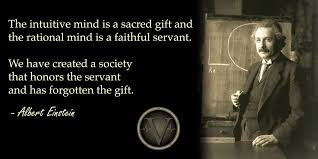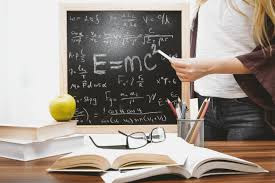Who is Albert Eisenstein
 |
| Albert Eisenstein |
Who is Albert Eisenstein
Einstein made many contributions, including special relativity (1905) and the theory of general relativity (1914). His other contributions include - Relative Universe, capillary motion, critical subduction, numerical mechanics problems, Brownian motion of molecules, mutation probability of molecules, quantum theory of gas with one molecule, thermal properties of light with low radiation density, theory of radiation, Geometry of integrated field theory and physics is included. Einstein wrote more than fifty papers and books apart from science. Time magazine declared Shatabdi-Purush in 19. According to a survey, he was considered the greatest scientist of all time.
Einstein published more than 300 scientific papers. On 5 December 2014, universities and archives announced the display of over 30,000 unique documents and papers from Einstein. Einstein's intellectual achievements and singularities have made the term "Einstein" synonymous with "intelligent".
 |
| Albert Eisenstein |
Biography
Childhood and education
Albert Einstein was born in Germany into a Jewish family in Wüttemberg. His father was an engineer and salesman. His mother was Pauline Einstein. Although Einstein had difficulty speaking initially, he was not very good at studies. His mother tongue was German and later he also learned Italian and English.
In 1880 his family moved to the city of Munich, where his father and uncle together opened a company named "Elektrotechnische Fabrik J. Einstein & Cie", which manufactured electrical appliances. And it also provided lights for the first time at the Oktoberfest fair in Munich. His family did not believe in Jewish religious traditions, and for this reason Einstein could go to Catholic school. He learned to play Sarangi at the behest of his mother. He did not like this and left it later, but later he enjoyed Mozart's Sarangi music.
In 1894, his father's company could not get a contract to supply for electric lighting in the city of Munich. Due to the loss, he had to sell his company. In search of business, the Einstein family moved to Italy, where they first settled in Milan and then a few months later in the city of Pavia. Even after the family left for Pavia, Einstein stayed in Munich to complete his studies. In late December 1894, he traveled to Italy to visit his family in Pavia. During his time in Italy, he wrote a short essay titled "Examining the state of the ether in a magnetic field".
Scientific term
Throughout his lifetime, Einstein published hundreds of books and articles. He published more than 300 scientific and 150 non-scientific research papers. In his 1965 lecture, Oppenheimer noted that Einstein's early writings had many errors, causing his publication to be delayed by nearly ten years: "a man whose errors took a long time to correct," How great it would be ". [3] In addition to his own work, he also collaborated with other scientists, including Bose Einstein statistics, Einstein refrigerators and many more. Get.
1905 – Anus Mirabilis Papers
Anus Mirabilis Papers deals with four articles that Einstein published in 1905 in a scientific journal named Onlen der Physik, which included the optoelectric effect (which gave rise to quantum theory), Brownian motion, special relativism, and E = mc2. . These four articles have contributed greatly to the foundation of modern physics and changed the thinking of people on space, time and matter.
 |
| Albert Eisenstein |
Thermodynamic instability and statistical physics
Einstein's first thesis was on "capillary attraction", presented to Onlen der Physik in 1900. [9] It was published in 1901 with the title "Extracts from capillary phenomena". Two papers published in 1902–1903 ( In thermodynamics) attempted to explain the atomic phenomena through statistical methods. This paper formed the foundation for a 1905 paper on Brownian motion, which showed that Browne was responsible for the presence of molecules. The speed can be used as evidence. His research in 1903 and 1904 are related mainly to the effect of finite atomic size on diffusion phenomena.
Theory of relativity
He expressed the principle of relativity. Which, according to Herman Minkowski, is known for the generalization of alternation alternately from space to space-time. Other theories that were formulated by Einstein and later proved to be correct, later included the principle of equality and the theory of temperate normalization of quantum numbers.
Theory of relativity and E = mc²
Einstein's paper "On the dynamics of electricity of moving bodies" was completed on 30 June 1905 and published on 26 September of the same year. This establishes the coherence between Maxwell's equation of electricity and magnetism and the theory of mechanics, after major changes in mechanics close to the speed of light. This was later known as Einstein's special theory of relativity.
The conclusion was that, in the time-space structure, dynamic matter is seen to be slow and constricted (in the direction of motion) when it is measured in the observer's frame. This paper also argued that the idea of luminiferous ether (the foremost theory in physics at the time) was excessive.
In his paper on mass-energy equivalence, Einstein constructed E = mc² from special relativity equations. Since 1905 Einstein's research in relativity remained controversial for many years, although it was also accepted by many leading physicists such as Max Planck.
Photon and energy quanta
photoelectric effect. Photons coming from the left side, colliding with a metal plate (below), and throwing out electrons (moving to the right).
In a 1905 paper, Einstein explained that light itself consists of local particles (quantum). Einstein's light quanta hypothesis was rejected by almost all physicists, including Max Planck and Niels Burr. This hypothesis was universally accepted in 1919, with Robert Mulliken's detailed experiments on the optoelectric effect, and the Compton scattering measurements.
Einstein concludes that each wave of frequency (f) is associated with each collection of photons of energy (hf) (where h is the Planck constant). He did not say more about this, because he was not sure how particles are related to waves. But he suggested that this hypothesis can be explained by some experimental results, which were later specifically called the photoelectric effect.
Quarantined atomic vibration
In 1907, Einstein proposed a model that each atom oscillates independently in a lattice structure. In the Einstein model, each atom oscillates independently. Einstein knew that real oscillations have different frequencies but still proposed this theory, as it was a clear demonstration of how quantum mechanics, in conventional mechanics, is associated with specific heat. Can solve the problem. Peter DeBai refined this model.
Steady theory and gait angle
During the 1910s, it expanded to bring individual systems within the realm of quantum mechanics. Following the discovery of Ernest Rutherford's nucleus, and the proposition that electrons revolve in orbit like planets, Niels Bohr was able to show that the discrete motion of electrons in atoms of elements by quantum mechanical, initiated by Planck and developed by Einstein And the periodic table of the elements can be explained.
Einstein contributed to its development by combining the logic of 1898 with Wilhelm Vienna. Vienna showed that all black rotations at different temperatures can be derived from each other by a simple transfer process, from the hypothesis of a thermodynamic variation of a thermal equilibrium state. In 1911, Einstein found that the same temperate theory shows that the quantity that is quantized in any mechanical motion must be a stabilizing invariant. Arnold Summerfield identified temperate invertebrates as dynamic variables in traditional mechanics.
Wave particle dualism
According to this theory-
Atoms present in matter behave like both wave and particle.
Albert Einstein has made a huge contribution in this subject.
personal life
Civil rights advocates
Einstein was a passionate, committed anti-racist, and also a member of the National Association of the Advancement of Colored People (NAACP) institution in Princeton, where he also participated in the campaign for civil rights of African Americans. He considered racism to be America's "worst disease", [18] at the time of his involvement, he was a civil rights activist W.E.B. Du joined with Bois, and agreed to testify on his behalf during one of his trials in 1951. [19] When Einstein offered to be a witness to Du Bois's character, the judge dismissed the trial. Decided to do.
Einstein in 1947
In 1946 Einstein visited Lincoln University in Pennsylvania, a historic black college, where he was awarded an honorary degree (the first university in the United States to award college degrees to African Americans). Einstein gave a speech about racism in America, stating, "I have no intention of being silent about it." [20] A resident of Princeton recalls that Einstein had never done a college education for black students. The fee was also paid.
Other events
Before World War II, a newspaper published a brief statement in one of its columns that Einstein was so well known in America that people stopped him on the street and asked him to explain his theory. Eventually he figured out a way to avoid this constant questioning. He used to say to them "Sorry! I often think Professor Einstein but I am not." [22] Einstein has been the subject or inspiration of many novels, films, plays and musicals. [23] He is "mad" scientists " Or was a favorite character for portraying other professors; her expressive face and distinctive hairstyle have been widely copied. Frederick Golden of Time magazine once wrote Eat that Einstein was like "a dream come true of a cartoonist."
Awards and honors
Einstein received many awards and honors, and in 1922 he was awarded the Nobel Prize in Physics for "his services to theoretical physics, and especially for the discovery of the photoelectric effect". If no nomination in 1921 met the criteria set by Alfred Nobel, then the award of 1921 went ahead and Einstein was awarded it in 1922.








No comments:
Post a Comment